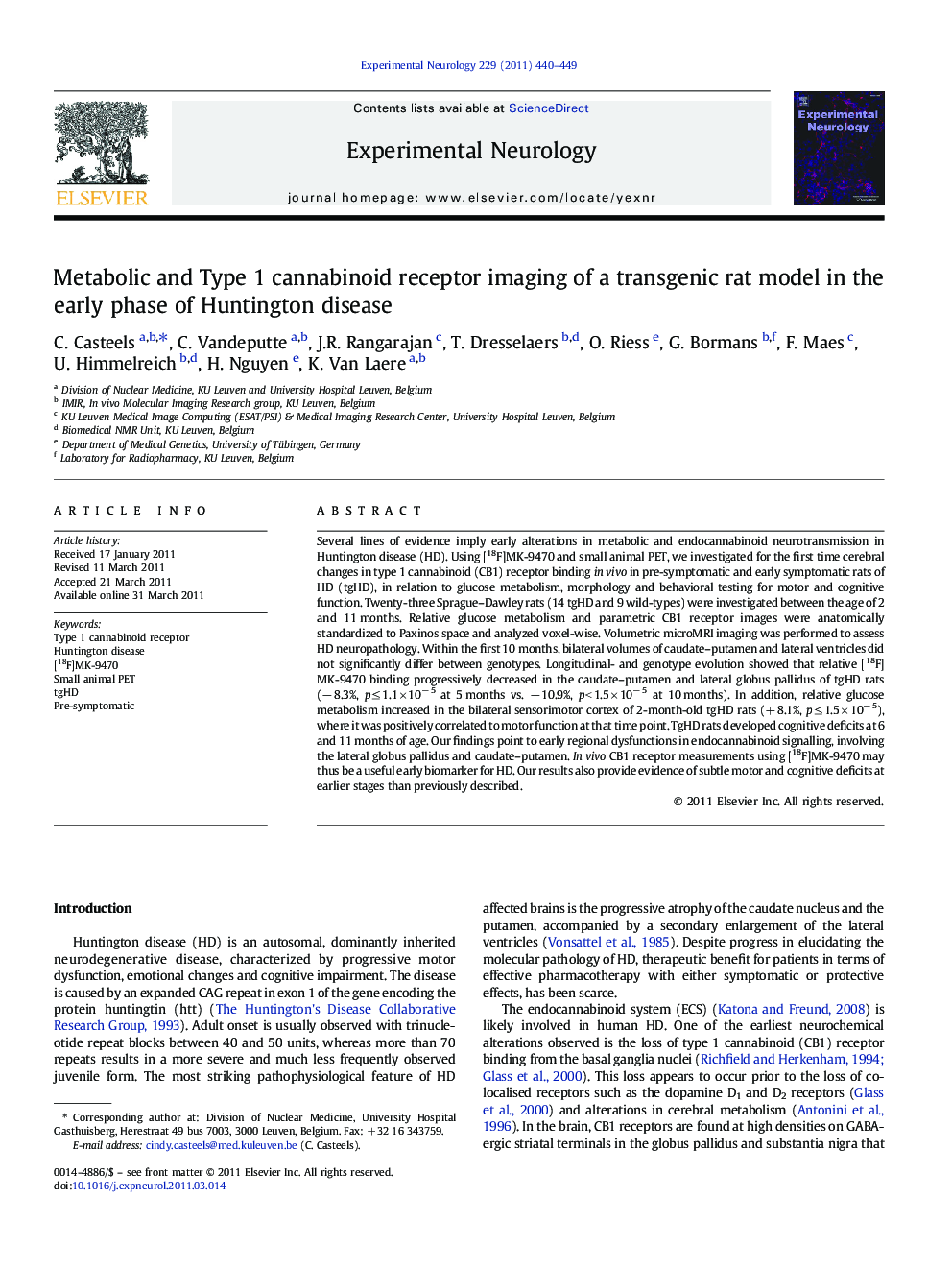| Article ID | Journal | Published Year | Pages | File Type |
|---|---|---|---|---|
| 3055821 | Experimental Neurology | 2011 | 10 Pages |
Several lines of evidence imply early alterations in metabolic and endocannabinoid neurotransmission in Huntington disease (HD). Using [18F]MK-9470 and small animal PET, we investigated for the first time cerebral changes in type 1 cannabinoid (CB1) receptor binding in vivo in pre-symptomatic and early symptomatic rats of HD (tgHD), in relation to glucose metabolism, morphology and behavioral testing for motor and cognitive function. Twenty-three Sprague–Dawley rats (14 tgHD and 9 wild-types) were investigated between the age of 2 and 11 months. Relative glucose metabolism and parametric CB1 receptor images were anatomically standardized to Paxinos space and analyzed voxel-wise. Volumetric microMRI imaging was performed to assess HD neuropathology. Within the first 10 months, bilateral volumes of caudate–putamen and lateral ventricles did not significantly differ between genotypes. Longitudinal- and genotype evolution showed that relative [18F]MK-9470 binding progressively decreased in the caudate–putamen and lateral globus pallidus of tgHD rats (− 8.3%, p ≤ 1.1 × 10− 5 at 5 months vs. − 10.9%, p < 1.5 × 10− 5 at 10 months). In addition, relative glucose metabolism increased in the bilateral sensorimotor cortex of 2-month-old tgHD rats (+ 8.1%, p ≤ 1.5 × 10− 5), where it was positively correlated to motor function at that time point. TgHD rats developed cognitive deficits at 6 and 11 months of age. Our findings point to early regional dysfunctions in endocannabinoid signalling, involving the lateral globus pallidus and caudate–putamen. In vivo CB1 receptor measurements using [18F]MK-9470 may thus be a useful early biomarker for HD. Our results also provide evidence of subtle motor and cognitive deficits at earlier stages than previously described.
Research highlights►We characterized brain CB1 receptor alterations in Huntington disease in vivo. ►Transgenic rats were investigated in pre-symptomatic and early symptomatic phase. ►CB1 receptor binding decreased in basal ganglia areas upon disease progression. ►We suggest that [18F]MK-9470 may be useful as early biomarker of HD.
